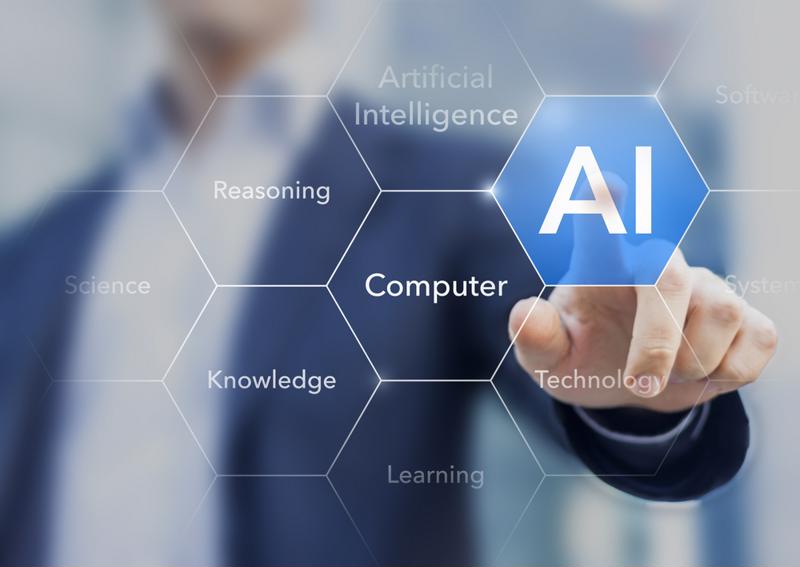
The advantages of IoT + AI adoption for BFSI
By Max BurkhalterAugust 24, 2018
Banking and financial institutions are leveraging data in ways never before possible, thanks to artificial intelligence (AI) adoption and the processing power now available to microsegment data down to an individual profile. Information from multiple sources can be funneled through a complex database and analyzed by neural networks to provide unique, real time insights into customer behaviors.
The ability to collate, combine and clean data that was formerly siloed allows "big picture" analysis, and generates predictive models that enhance customer experience, drive down costs, and combat risk. BFSI's adoption of AI is the next step in managing vast amounts of complex data in an environment that requires constantly evolving plans of action.
How does AI boost IoT power for BFSI?
Pairing IoT with AI allows financial institutions to harness the power of advanced analytics to lower risk and increase revenues. Behavioral predictions allow companies to provide precisely the right offer at exactly the right time to prompt consumer action, while interactive environments deliver personalized, compelling and competitive services.
AI adoption has provided the BFSI vertical with much needed capabilities in the ever escalating battle against fraud and cybercrime. According to research from Accenture, financial services have the highest cost when it comes to cybercrime, with the industry losing upwards of $11 million per year. Implementing AI can help target potential fraud and provide superior risk management compared to earlier methods of fraud detection.
Insurers can take advantage of the power of AI to find patterns that human data scientists cannot extract from mountains of available data. A pilot project that used Intel® Saffron™ Cognitive Solution to review potential insurance fraud across 113,000 cases found that what was formerly thought to be three separate fraud rings was in actuality a single massive operation that was costing the insurer $2 million a year.

Front facing opportunities for AI
A report from Gartner indicates that implementing a virtual customer assistant, or VCA, reduces call, chat, and email queries by up to 70%, while improving customer satisfaction. Chatbots are being used in ever-increasing numbers to automate self-service, and among industries that are leaders in adopting digital technology, over 50% of organizations are already investing in VCAs.
Gene Alvarez, Gartner's managing vice president, told attendees of the Gartner Customer Experience Summit in Tokyo, Japan, in February, that "[a]s more customers engage on digital channels, VCAs are being implemented for handling customer requests on websites, mobile apps, consumer messaging apps and social networks. This is underpinned by improvements in natural-language processing, machine learning and intent-matching capabilities."
AI is the key to deep learning (the next step up from machine learning), which can be leveraged to create human-like chat systems that deliver flawless customer experiences. A 2017 survey by SAP Hybris revealed that while only 19% of respondents were currently using chatbot technology, 77% had near-term deployment plans or were seriously considering adding chatbots to their customer facing communications options.
Back office advantages of AI
Advanced analytics solutions can consolidate and automate repetitive administrative tasks like checking and filing documents, creating summaries, converting PDFs to text, and correctly sorting and categorizing incoming material for rapid distribution to the right department. AI can reduce the efforts of finance professionals by taking over and streamlining tasks having to do with transaction processing, auditing and compliance.
According to a case study by SoftWorks AI, one major financial institution had a lag time of up to 2 hours on mortgage packet processing. With the help of an AI driven advanced document automation solution, high priority applications were identified and moved to the front of the line, and the average loan packet processing time was reduced to under five minutes.
Greater consistency and accuracy are two main advantages to AI in the back office, providing a reduction of human error and improved efficiency across multiple task verticals. The potential back-office use cases for AI span a broad spectrum, and can be used interdepartmentally to improve results from sales and marketing to internal review to government compliance.

How does network strength affect AI implementation?
A strong network connection is required to run advanced AI driven analytics and processing programs. Handling massive data sets that are being updated in real time depends on uninterrupted data streams from multiple sources. Disruption of network connections can lead to data losses or delays in updates, resulting in inefficient or incomplete task management and lagging or out-of-service customer facing protocols.
As BFSI organizations seek to implement AI solutions, Perle provides superlative hardware and expertise. Essential technology for network support, including signal switches, media converters and extenders can be utilized to extend and improve network strength. Contact Perle today to find out more about ways to support your AI integrated system.



